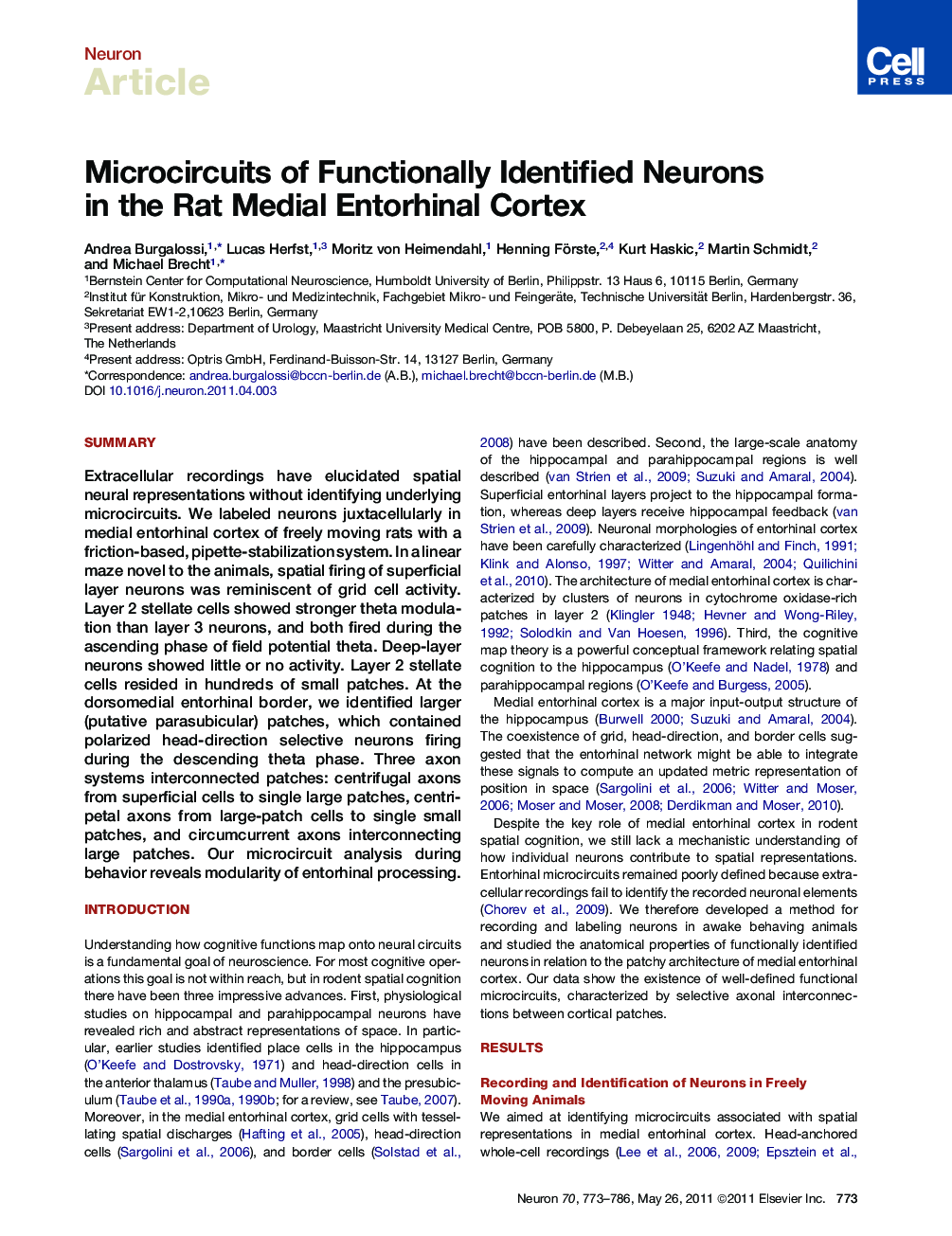| Article ID | Journal | Published Year | Pages | File Type |
|---|---|---|---|---|
| 4321769 | Neuron | 2011 | 14 Pages |
SummaryExtracellular recordings have elucidated spatial neural representations without identifying underlying microcircuits. We labeled neurons juxtacellularly in medial entorhinal cortex of freely moving rats with a friction-based, pipette-stabilization system. In a linear maze novel to the animals, spatial firing of superficial layer neurons was reminiscent of grid cell activity. Layer 2 stellate cells showed stronger theta modulation than layer 3 neurons, and both fired during the ascending phase of field potential theta. Deep-layer neurons showed little or no activity. Layer 2 stellate cells resided in hundreds of small patches. At the dorsomedial entorhinal border, we identified larger (putative parasubicular) patches, which contained polarized head-direction selective neurons firing during the descending theta phase. Three axon systems interconnected patches: centrifugal axons from superficial cells to single large patches, centripetal axons from large-patch cells to single small patches, and circumcurrent axons interconnecting large patches. Our microcircuit analysis during behavior reveals modularity of entorhinal processing.Video Abstract To view the video inline, enable JavaScript on your browser. However, you can download and view the video by clicking on the icon belowHelp with MP4 filesOptionsDownload video (16704 K)
► A friction-based stabilization method for juxtacellular labeling during behavior ► We identified small and large patches in medial entorhinal cortex ► Head-direction cells reside in large patches, putative grid cells in small patches ► Patches are interconnected by highly selective axon systems
